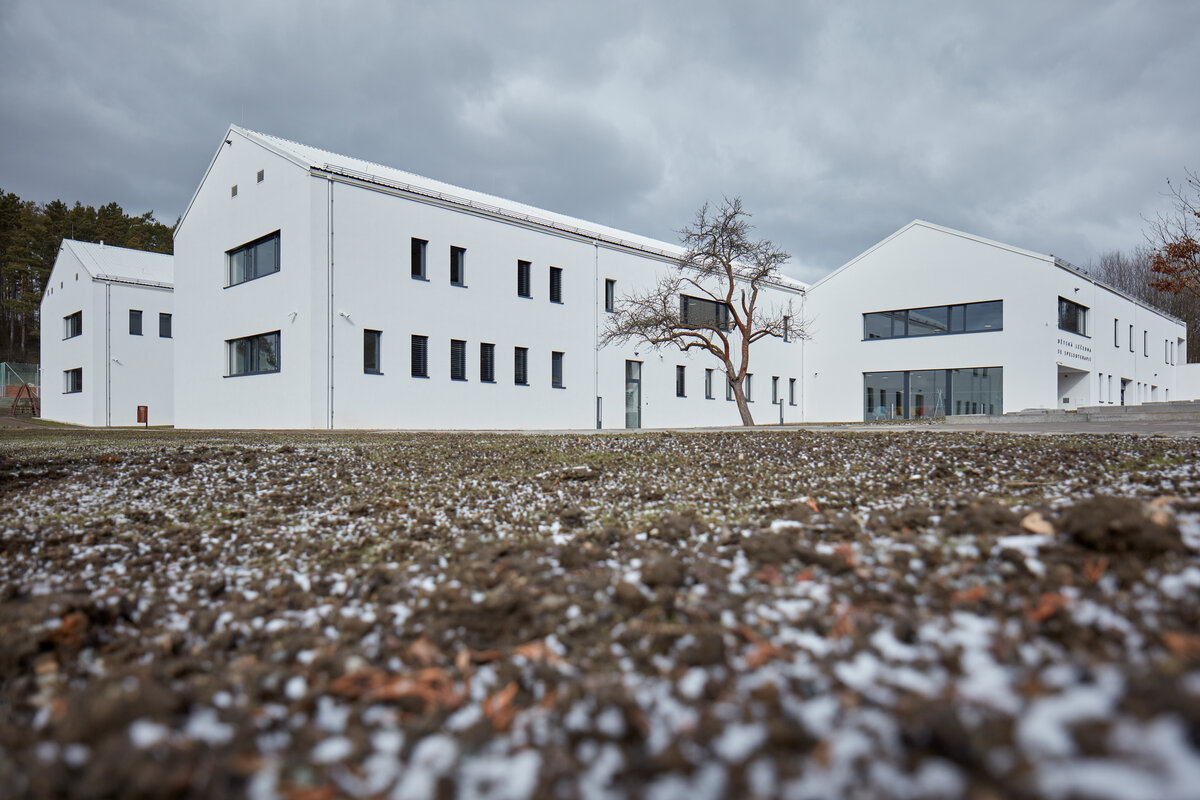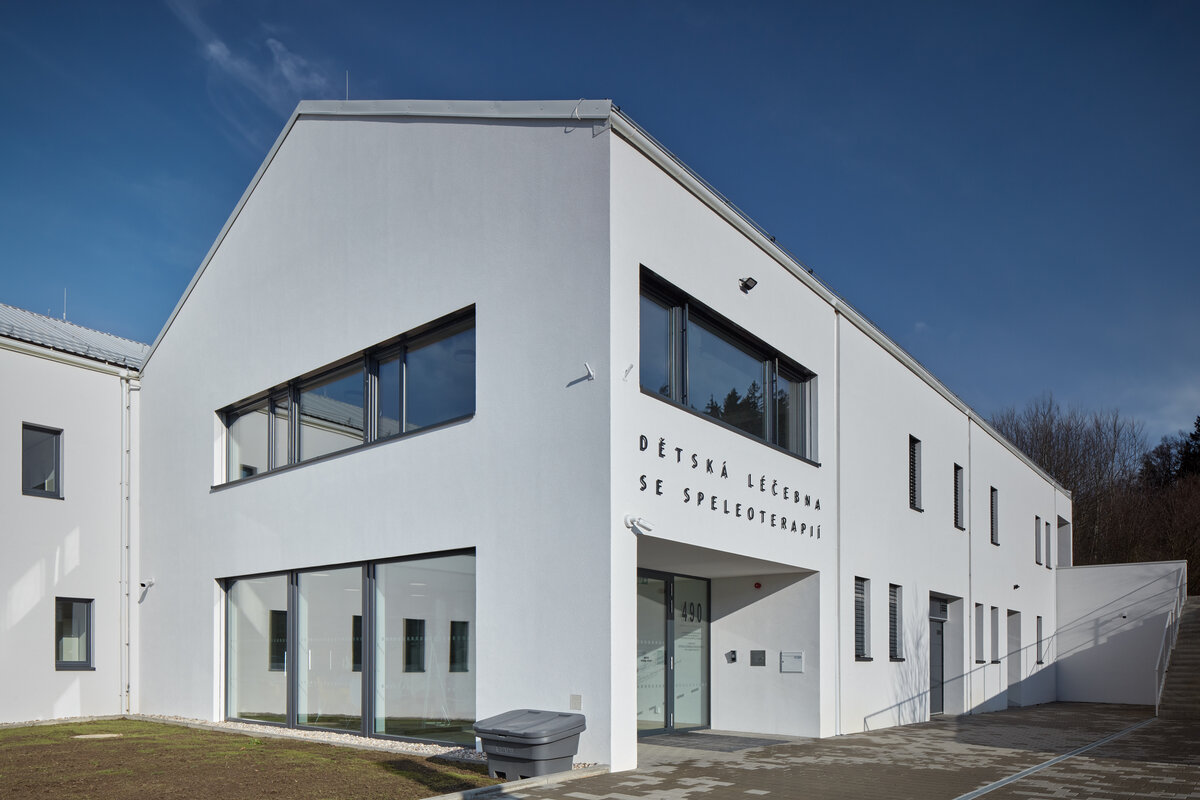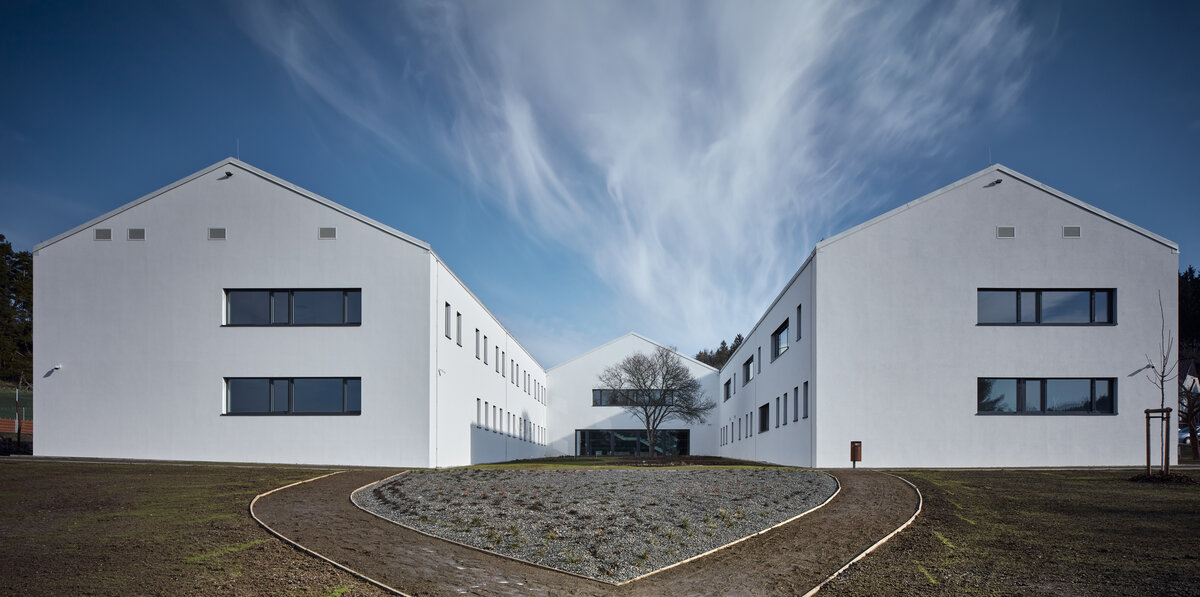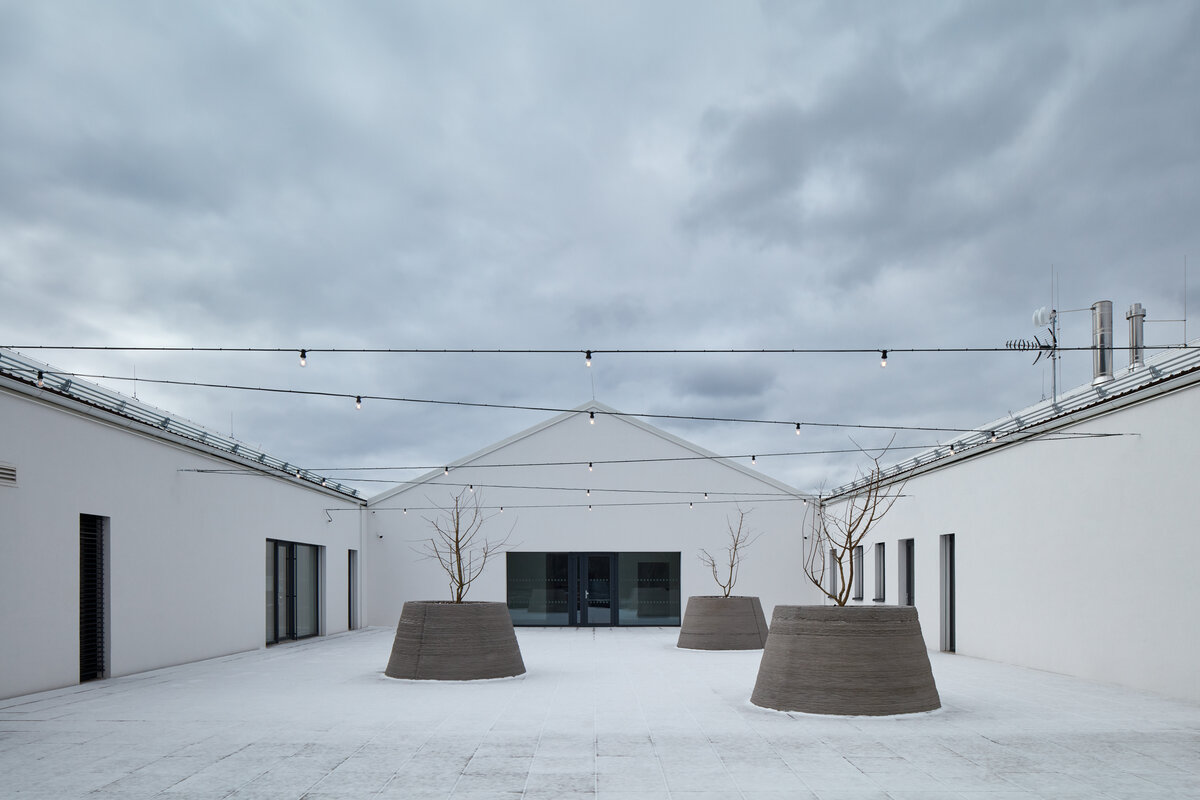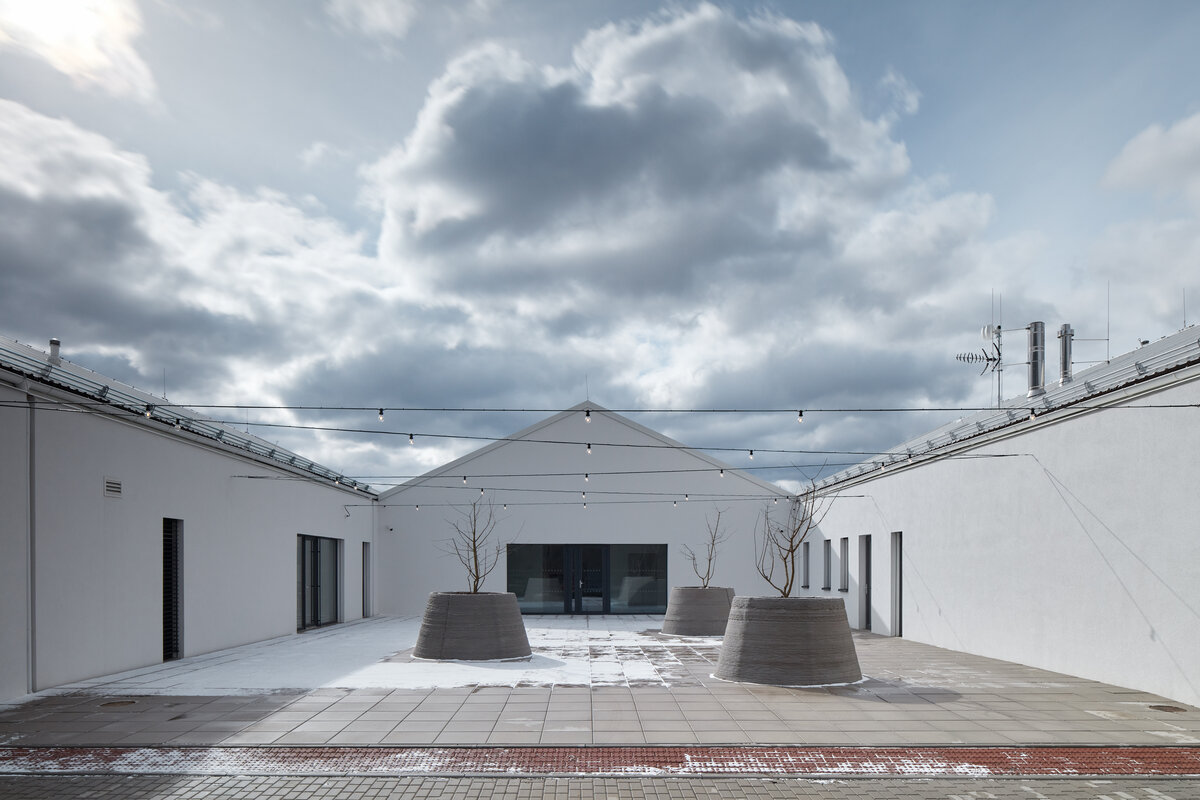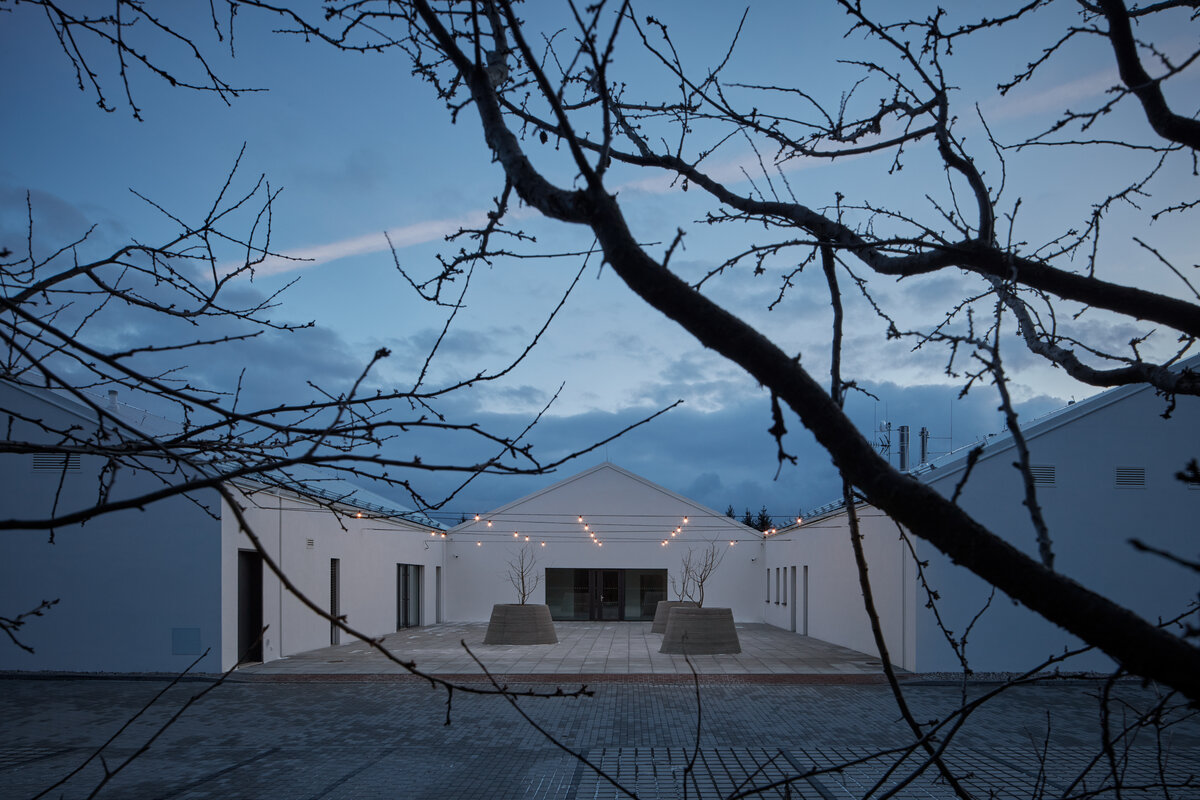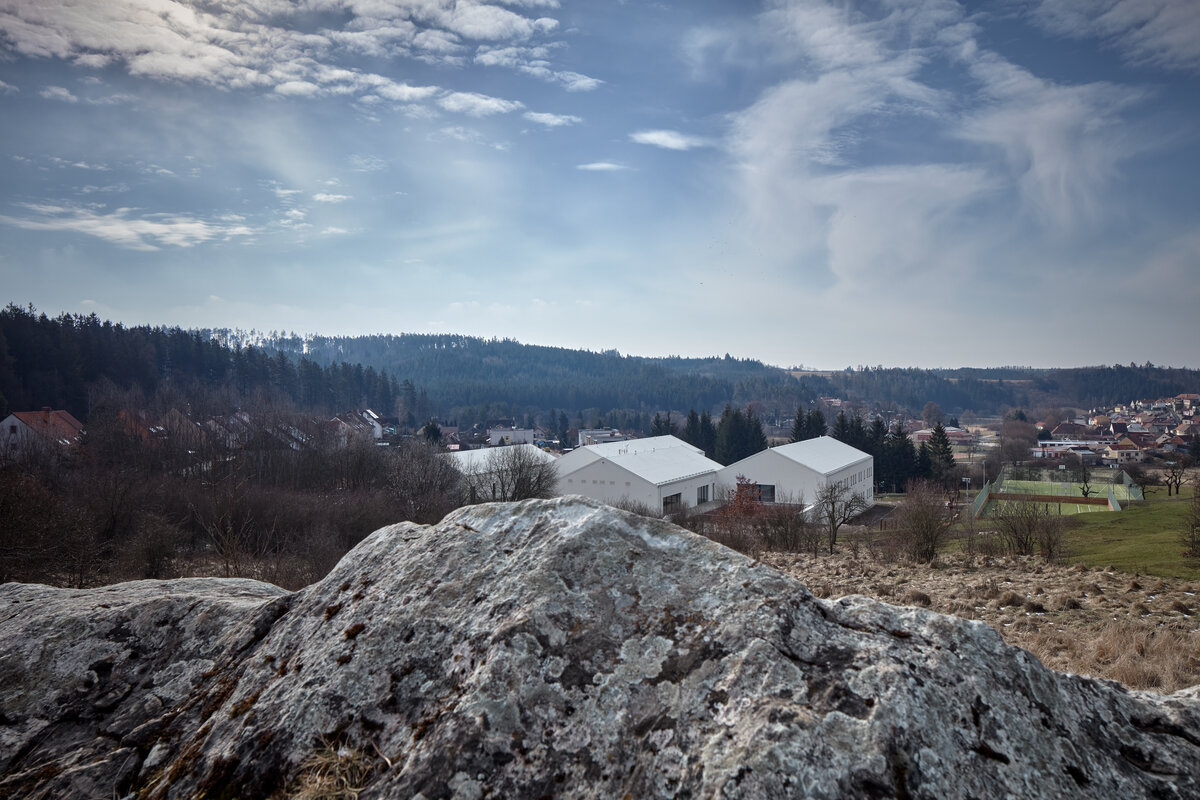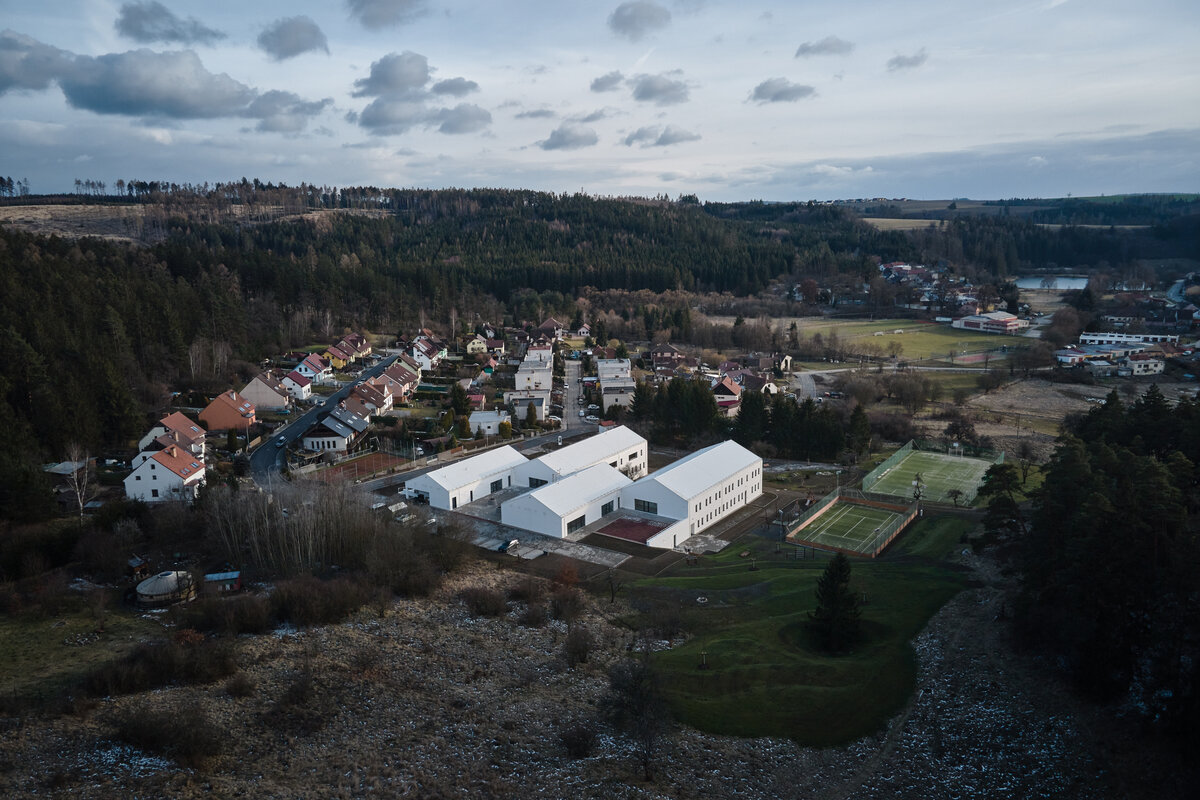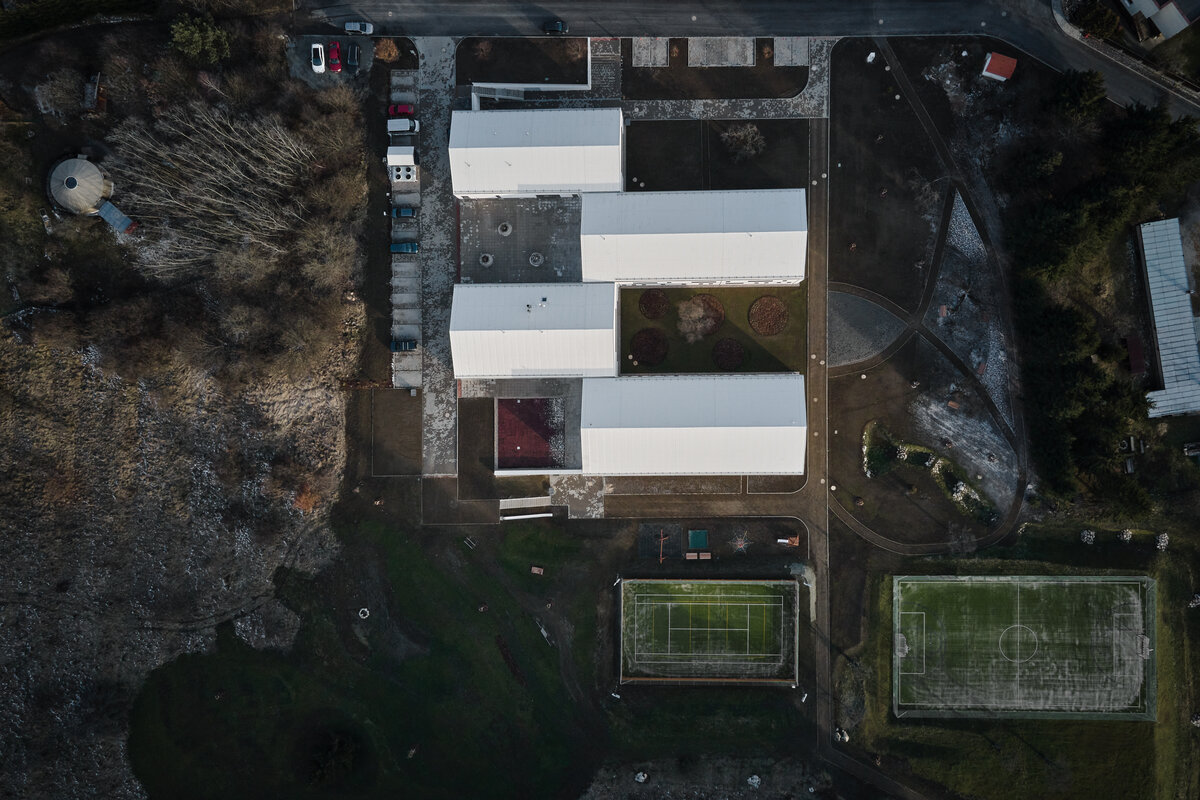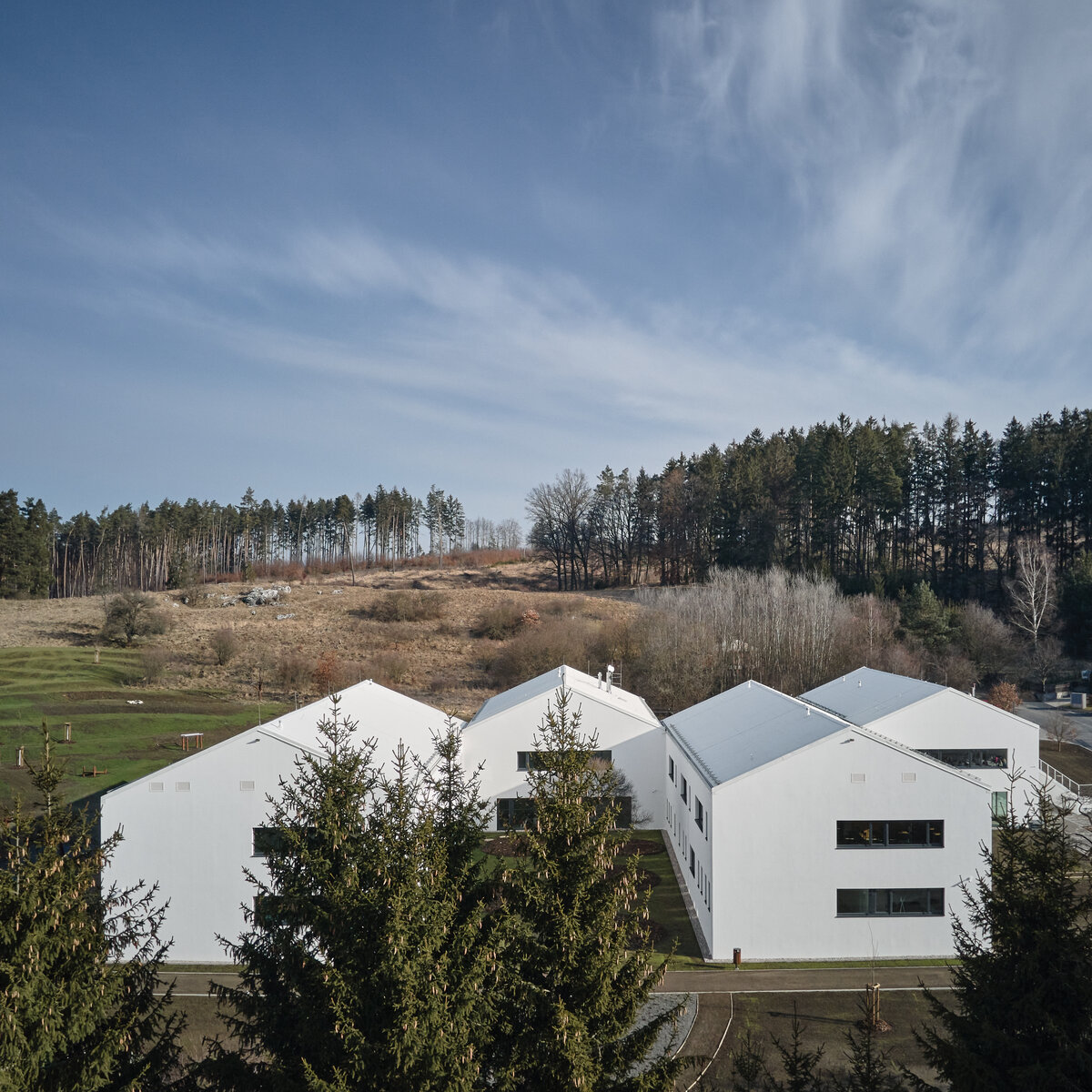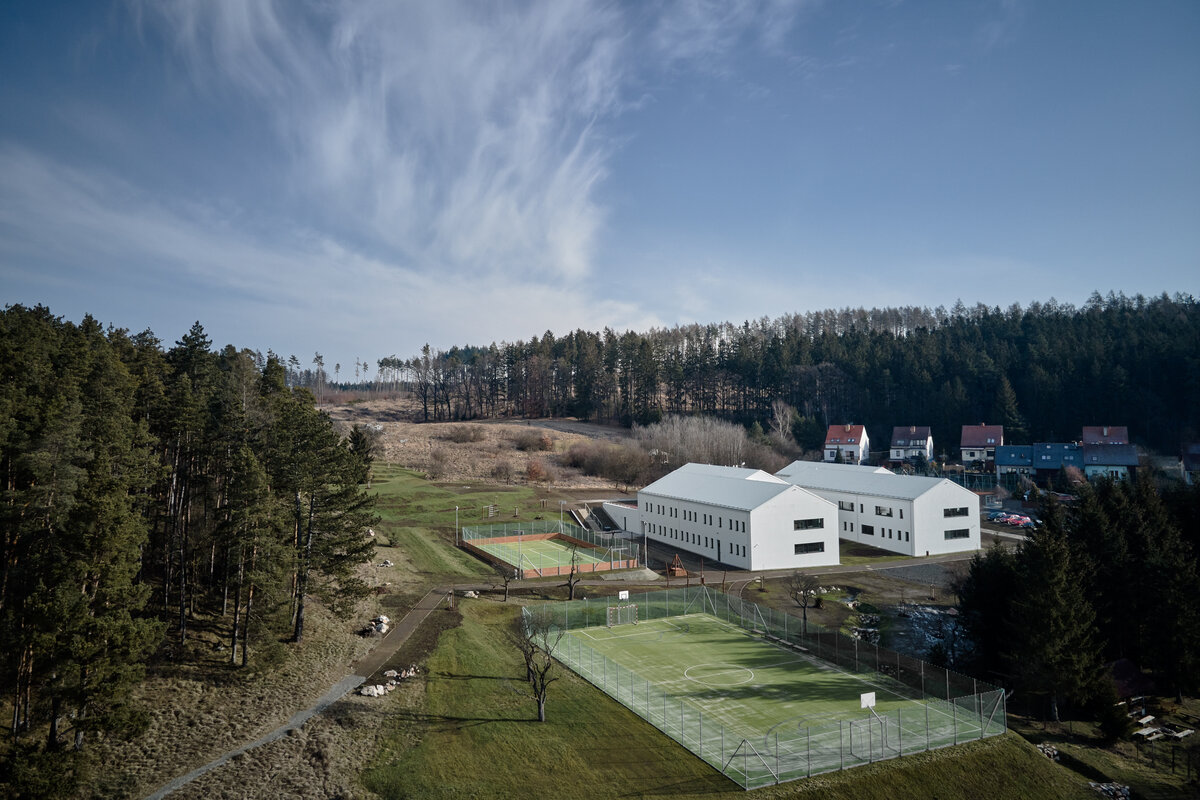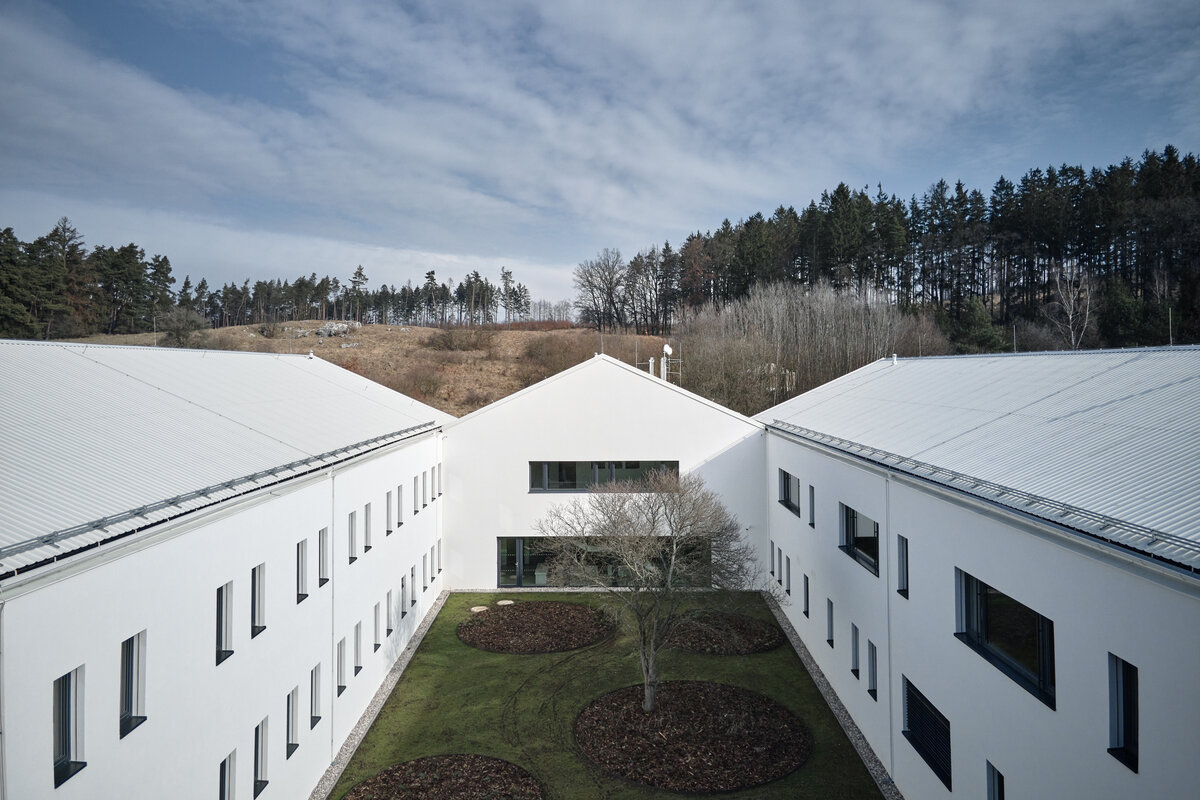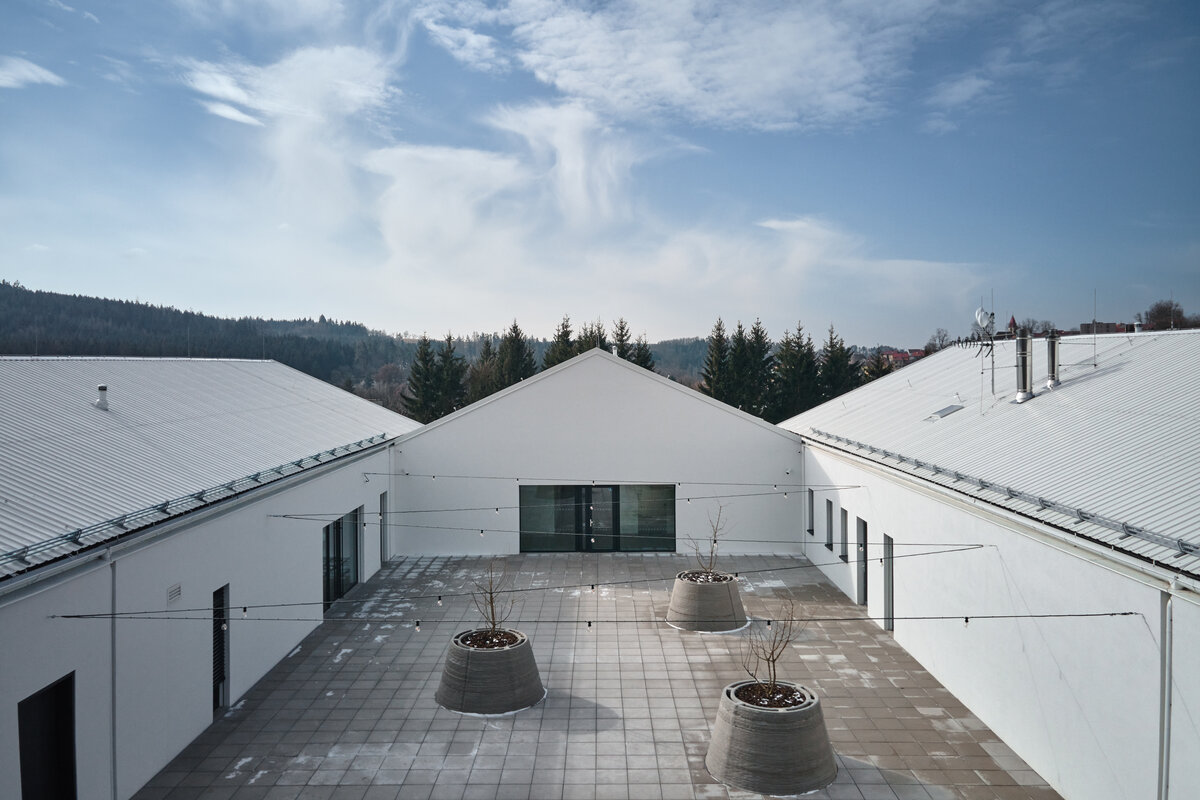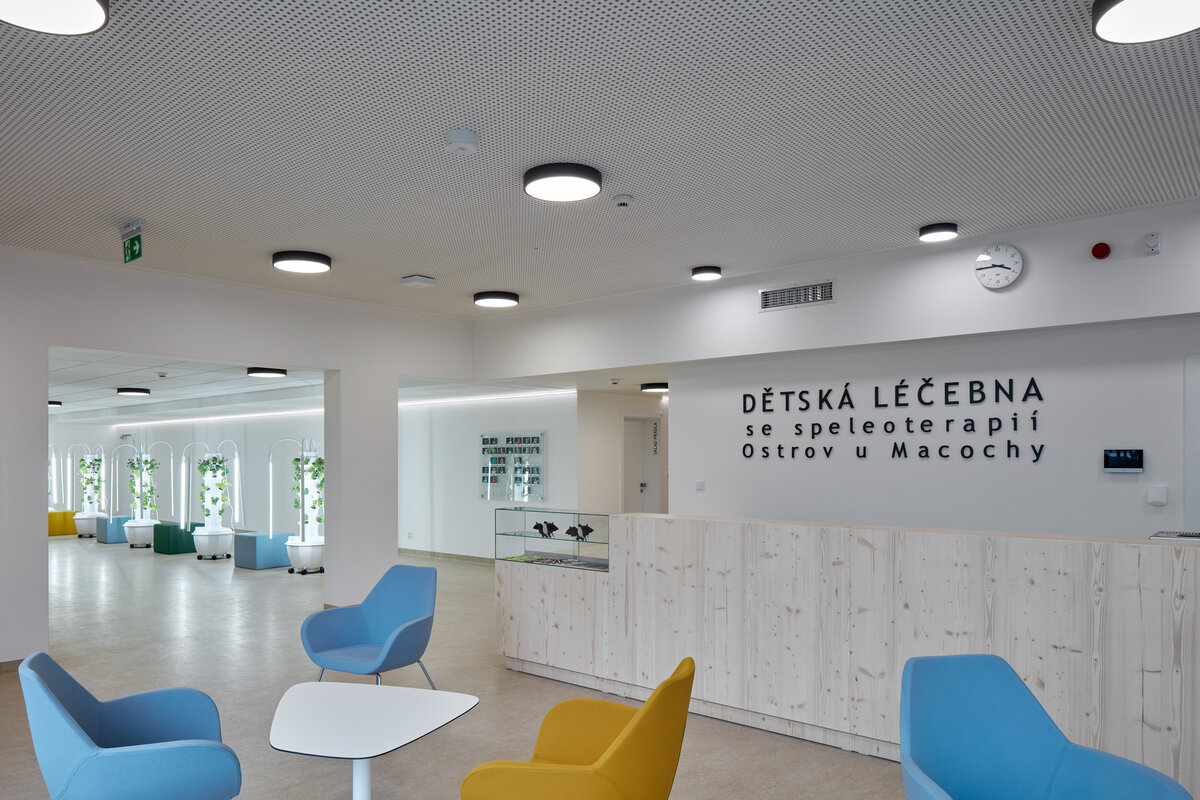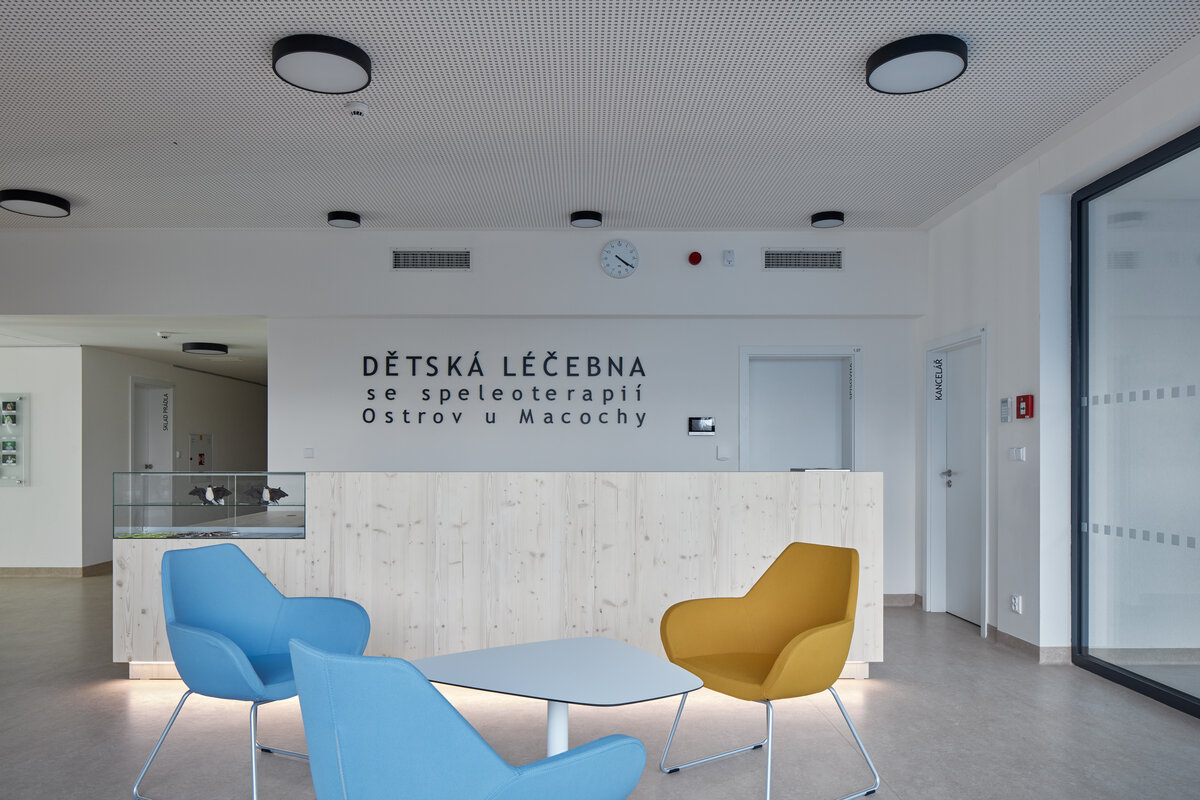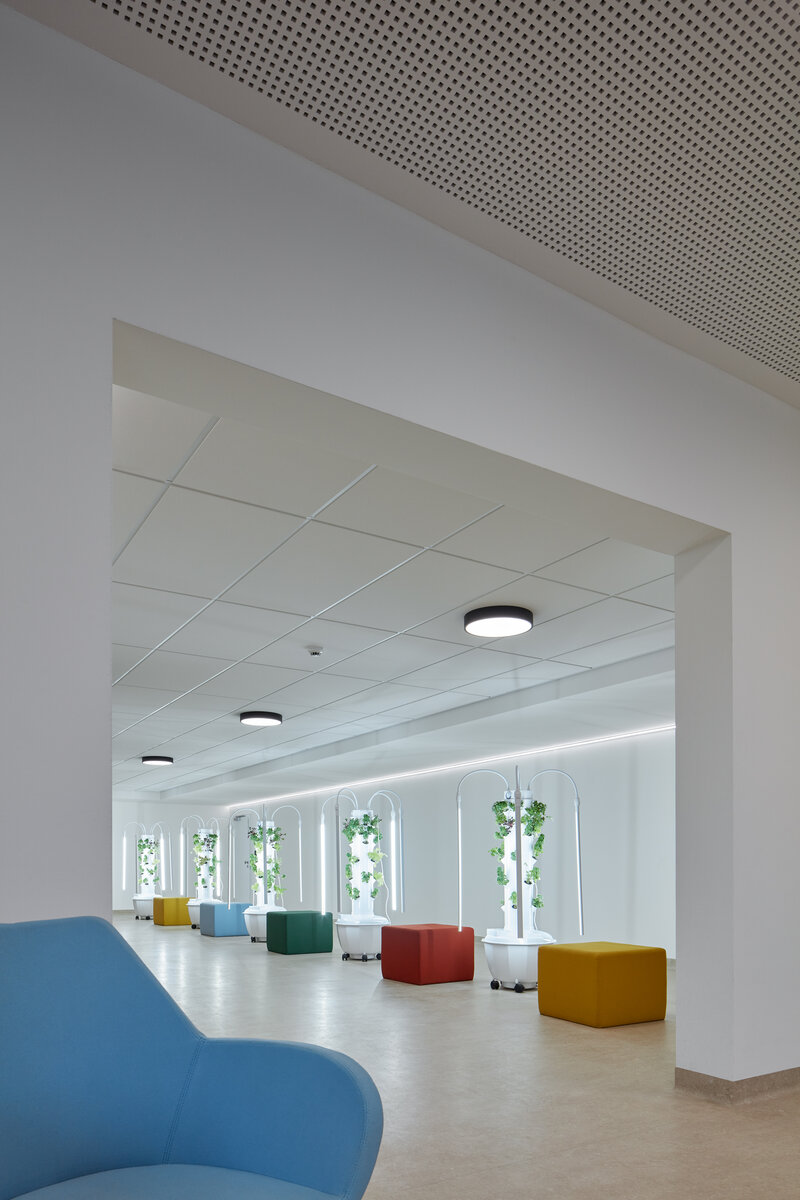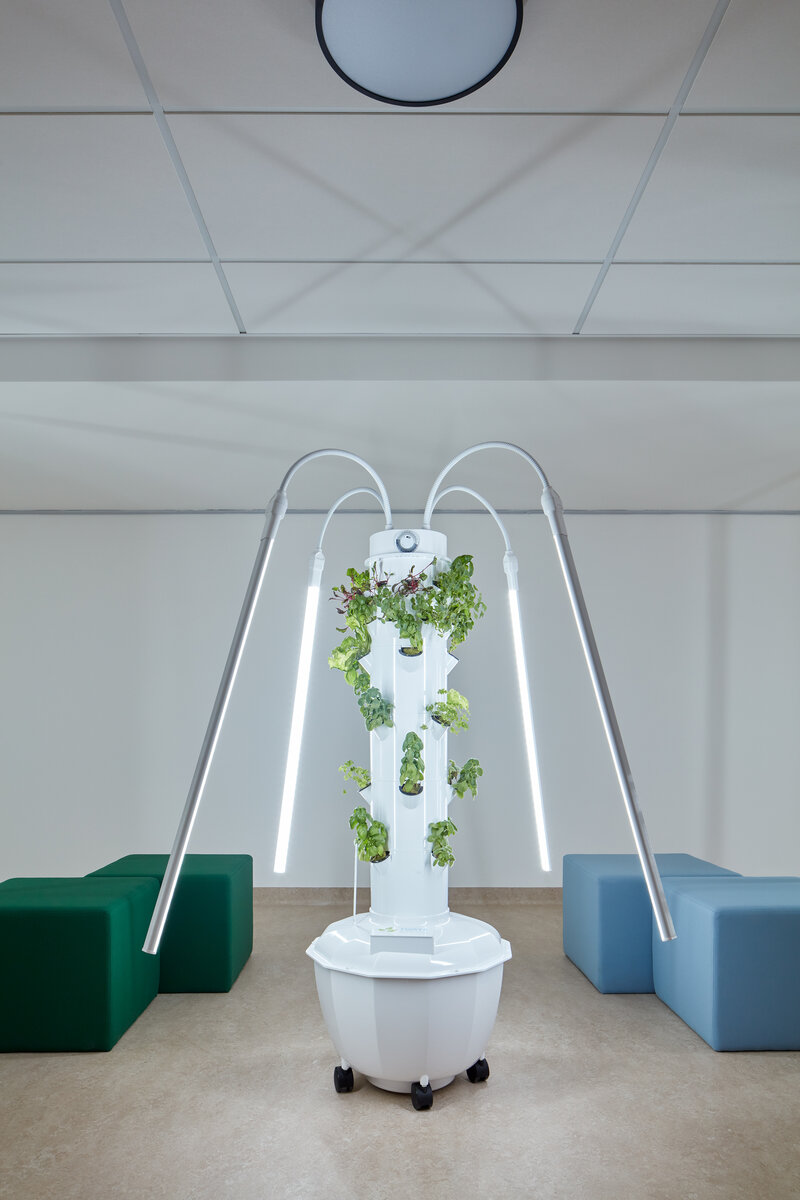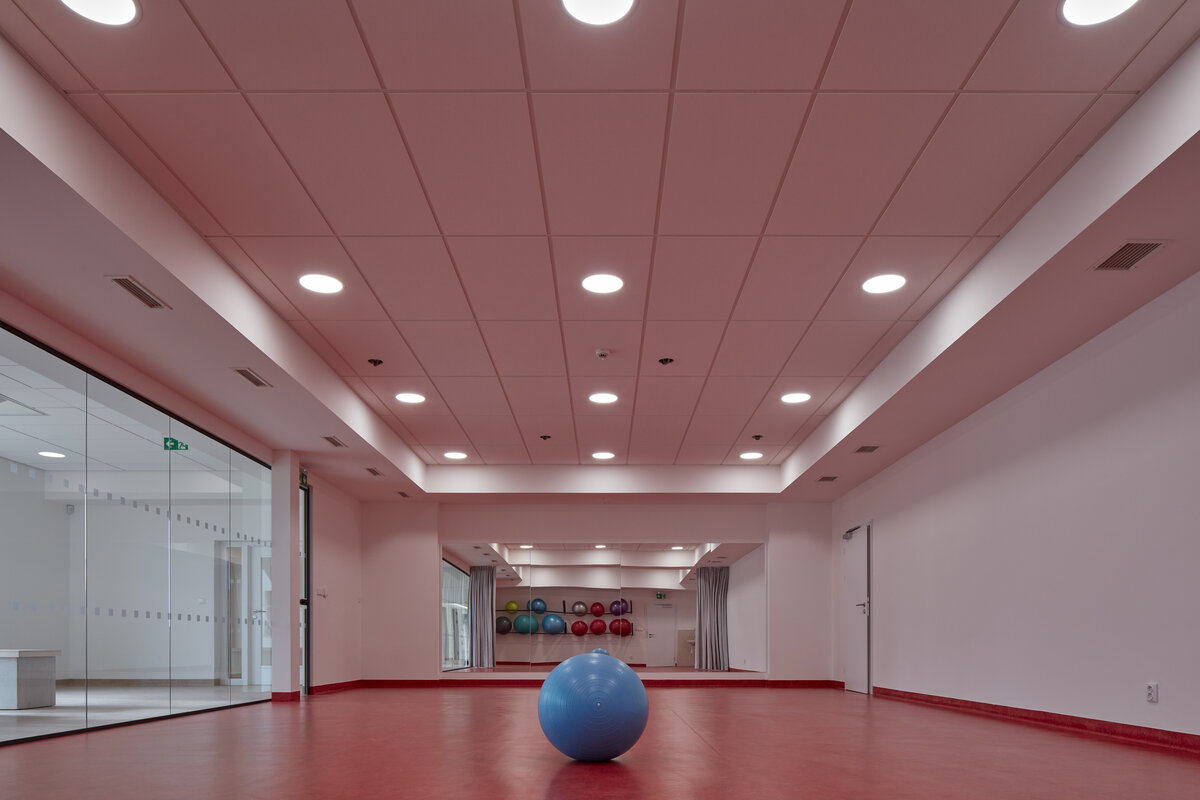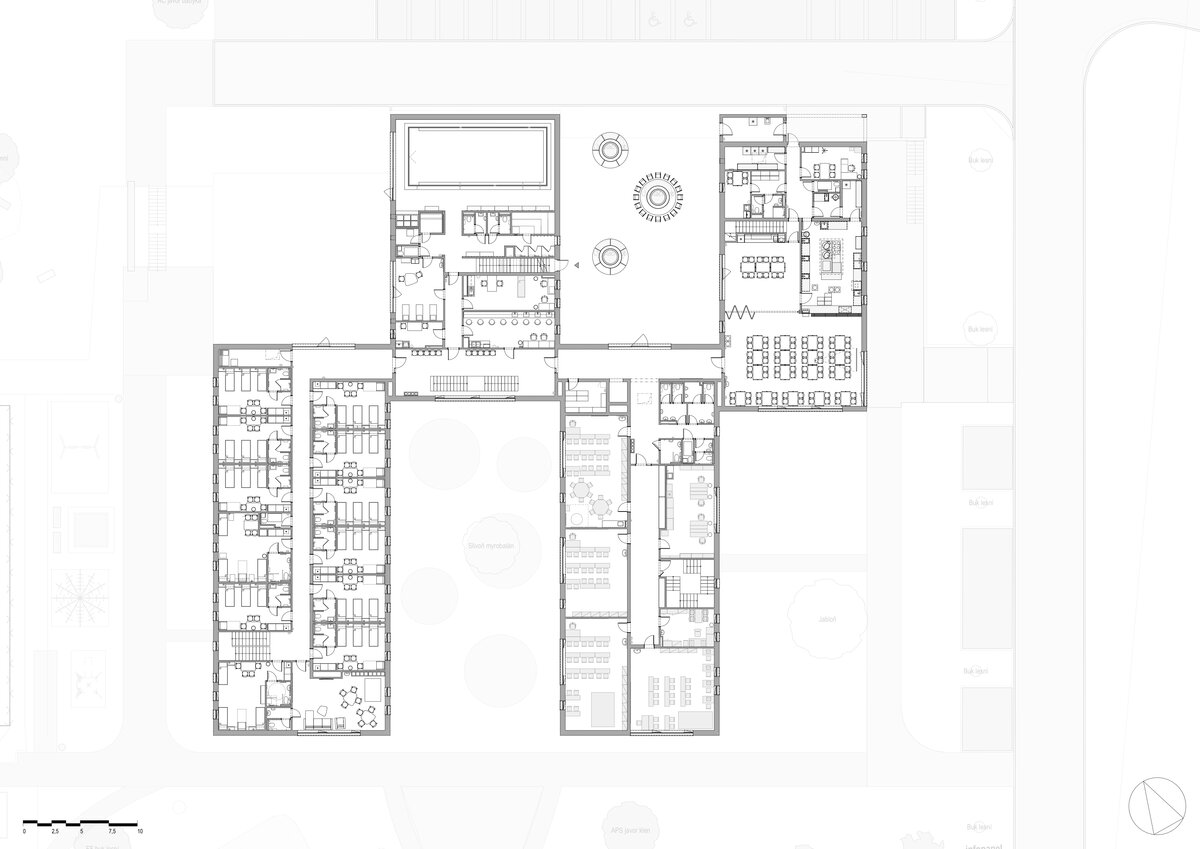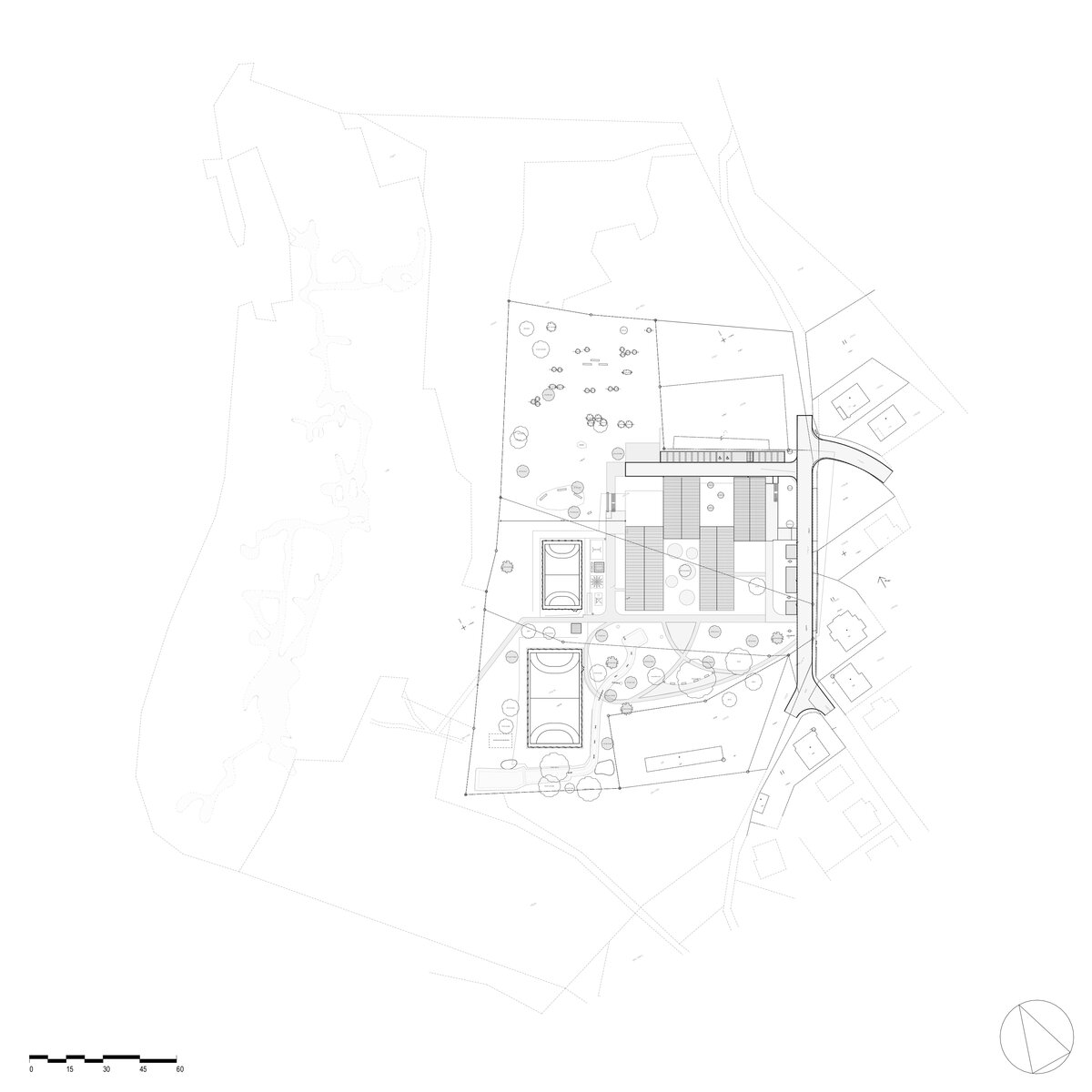| Author |
Ing. arch. Adam Rujbr, Ing. arch. Aleš Chlád, Ing. arch. Kateřina Gayerová, Ing. arch. Michaela Bastlová, Ing. Michal Surka |
| Studio |
Adam Rujbr Architects |
| Location |
Ostrov u Macochy 490, 679 14 Ostrov u Macochy |
| Investor |
Jihomoravský kraj
Žerotínovo nám. 449/3, 601 82 Brno |
| Supplier |
ENESA a.s. U Voborníků 10, 190 00 Praha 9-Vysočany
VCES a.s. Na Harfě 337, 190 00 Praha 9 |
| Date of completion / approval of the project |
November 2022 |
| Fotograf |
Boys Play Nice |
The children's clinic for children with respiratory diseases has a tradition of more than thirty years in Ostrov u Macochy in the Blanensko region. The environment of the Moravian Karst Protected Landscape Area has a beneficial effect on children's health, and the favourable climate of the adjacent Císařská jeskyně is also part of the treatment. The new complex has replaced the original temporary inadequate building. The land in the northern part of the island is adjacent to the area with family houses, the compactness of the village is preserved by interconnecting the building structures with mature greenery. The medical center is in the southeastern part of the parcel and leaves a wide green strip surrounding the village.
The shape of the buildings is inspired by the archetype of the children's drawing house, multiplied into four functionally distinct parts. The extension of two segments creates a permeating composition that draws nature and daylight in. The two-storey medical complex in white refers to the colour of limestone, which is typical of the region. It consists of four elongated tracts with gables oriented perpendicular to the service road. The setting into the terrain is based on morphology, part of it is recessed. Due to the slope of the plot, both floors are directly accessible from the ground. The strictly rectangular layout of the complex is softened by circular elements (benches in the courtyard and terrace, the shape of the light fittings, skylights, etc.), partly with the practical aim of eliminating injuries from sharp corners.
The garden is divided into zones that are functionally connected to the treatment room, the emphasis is on the terrain morphology. The traffic connections reflect the structure of the area and the site is crossed by two service axes. There are playgrounds, play elements for children and a gym. Newly planted trees, shrubs and flowers are non-hybrid with a predominance of local species.
One of the design principles is 'healing architecture'. Although children's perception is different from adults, the aim was to create a healing complex where everyone feels comfortable. The desire for 'healing architecture' is reflected in the overall appearance, which is personified by the pure white colour of the facade and roof, and the setting in the landscape and terrain. The interiors feature bright colours and combinations of colours, and the indoor spaces are consistently linked to the outdoor relaxation areas.
The clinic includes several separate sections according to their content:
1. the entrance area with reception and technical facilities, on the first floor there is a dining room and kitchen
2. a medical section with a service apartment, a school on the first floor and technical facilities in the basement
3. wellness area with a gym on the ground floor and balneo facilities on the first floor, technology in the basement
4. two-storey accommodation area, with changing rooms, drying rooms and laundry in the basement, connected to the exterior
All sections are accessible from the central alley and stair hall, none of the sections are pass-through.
The building meets strict hygiene regulations and high indoor environmental quality requirements, is managed using smart technology, runs on renewable energy and has low running costs.
The design of the building's technological equipment has been adapted to its purpose to provide the best possible indoor environment for children with respiratory problems. The building is ventilated with air treatment in the HVAC units with emphasis on air cleanliness, temperature and humidity. An overhead system is used for heating and cooling, and autonomous controls with temperature and humidity sensors, supplemented by CO2 sensors, are installed in each room. A wood pellet boiler is the primary heat source, and there is also a pair of overhead condensing boilers as a bivalent backup source. A compressor chiller is used for cooling. Lighting uses LED fixtures. Total non-renewable primary energy consumption is 111 kWh/m2/year. Energy and water efficiency is key and the entire system is fully automated with visualisation on a graphical control panel and the possibility of remote access and control.
Green building
Environmental certification
| Type and level of certificate |
-
|
Water management
| Is rainwater used for irrigation? |
|
| Is rainwater used for other purposes, e.g. toilet flushing ? |
|
| Does the building have a green roof / facade ? |
|
| Is reclaimed waste water used, e.g. from showers and sinks ? |
|
The quality of the indoor environment
| Is clean air supply automated ? |
|
| Is comfortable temperature during summer and winter automated? |
|
| Is natural lighting guaranteed in all living areas? |
|
| Is artificial lighting automated? |
|
| Is acoustic comfort, specifically reverberation time, guaranteed? |
|
| Does the layout solution include zoning and ergonomics elements? |
|
Principles of circular economics
| Does the project use recycled materials? |
|
| Does the project use recyclable materials? |
|
| Are materials with a documented Environmental Product Declaration (EPD) promoted in the project? |
|
| Are other sustainability certifications used for materials and elements? |
|
Energy efficiency
| Energy performance class of the building according to the Energy Performance Certificate of the building |
A
|
| Is efficient energy management (measurement and regular analysis of consumption data) considered? |
|
| Are renewable sources of energy used, e.g. solar system, photovoltaics? |
|
Interconnection with surroundings
| Does the project enable the easy use of public transport? |
|
| Does the project support the use of alternative modes of transport, e.g cycling, walking etc. ? |
|
| Is there access to recreational natural areas, e.g. parks, in the immediate vicinity of the building? |
|

